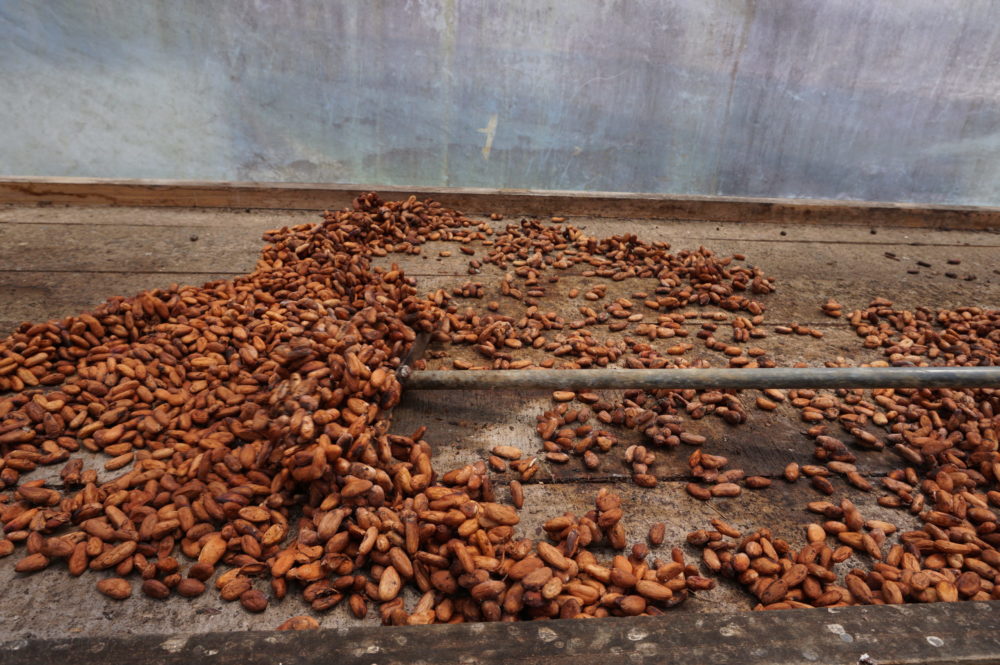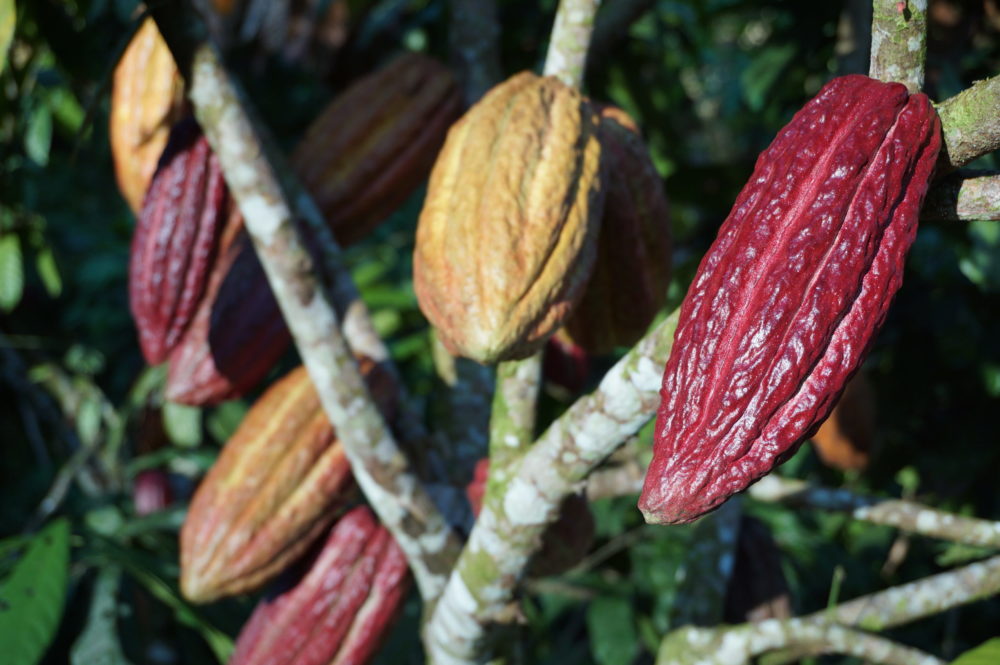Will cocoa die out? Or: Will the Germans soon run out of chocolate ? – Such headlines have been plentiful in recent years! But while most of the reporting focuses primarily on the shortage of raw materials and plant diseases , the actual problem is much more complex.
Cocoa trees only grow in equatorial regions, strictly speaking a maximum of 23 degrees north or south of the equator. The growing regions stretch around the world like a chocolate belt. After a cocoa tree has been planted, it takes about 5-8 years before the first cocoa pods can be harvested. All under the condition that the trees do not fall victim to diseases beforehand. This affects around 30-40% of the trees grown each year. In order to ward off disease and promote healthy growth, cocoa trees require a lot of attention and care from cocoa farmers. [You want to learn more about cocoa cultivation? Then read on here... ]

Especially considering the high amount of work that cocoa farmers take on, it is hard to imagine how little they are paid for their hard work. The United Nations defines extreme poverty as $1.25 per person per day. On average, cocoa farmers earn around 2 dollars per person per day, but they have to support their entire families with it. Despite the harshest conditions and great risks - such as disease infestation of the trees - most of them still live below the poverty line.
One of the most striking consequences is child labor and child slavery. The former has recently been repeatedly uncovered on Fairtrade farms. With the purchase of certified supermarket chocolate, we are currently primarily doing something good for our conscience, but not for the people in the cocoa supply chain. So it's hardly surprising if farmers are cultivating less and less cocoa and instead turning to more lucrative products like coffee or cocaine. Younger generations often turn away from cocoa cultivation completely - if they can - because they see no future for themselves here. This problem is not mentioned at all or only marginally in most articles on the "chocolate crisis".

The world of fine flavor cocoa is even worse: fine cocoa varieties are only available in small quantities anyway, they make up about 5% of the world's cocoa. In order for these farmers to continue to grow their rare varieties - despite higher risks and smaller yields - producers and customers must be willing to pay higher prices. Because the mostly old varieties not only bring an incomparable variety of aromas with them. They also ensure biodiversity and often provide habitats for endangered animal species.
You can find out how good chocolate affects the environment here, among other things. Fortunately, there are more and more manufacturers - like all of our chocolate friends - who are facing these problems and trying to be part of the solution. They pay high and fair prices, get their beans through direct trade or produce them locally . In this way, they make an enormous contribution to improving the quality of life of the farmers. And, ultimately, they offer better perspectives to younger generations.
So instead of focusing on the obvious problems like plant diseases, we as consumers should broaden our view. What challenges does the system as a whole face and what contribution can everyone make to promote sustainable cocoa cultivation? The good news: Enjoying really good chocolate - which has been produced fairly, finely and sustainably - is a step in the right direction. In this way we can make the chocolate world better bit by bit, contribute to the preservation of rare varieties and ultimately ensure that a fairer and more sustainable chocolate industry is possible!
Would you like to learn more about fair, fine and sustainable chocolate? As part of regularchocolate tastings or as a participant in our chocolate team events, you will learn everything you need to know about your favorite food.
Cacao cultivation and plant diseases
Cocoa trees only grow in equatorial regions, strictly speaking a maximum of 23 degrees north or south of the equator. The growing regions stretch around the world like a chocolate belt. After a cocoa tree has been planted, it takes about 5-8 years before the first cocoa pods can be harvested. All under the condition that the trees do not fall victim to diseases beforehand. This affects around 30-40% of the trees grown each year. In order to ward off disease and promote healthy growth, cocoa trees require a lot of attention and care from cocoa farmers. [You want to learn more about cocoa cultivation? Then read on here... ]
The problem with fair wages
Especially considering the high amount of work that cocoa farmers take on, it is hard to imagine how little they are paid for their hard work. The United Nations defines extreme poverty as $1.25 per person per day. On average, cocoa farmers earn around 2 dollars per person per day, but they have to support their entire families with it. Despite the harshest conditions and great risks - such as disease infestation of the trees - most of them still live below the poverty line. One of the most striking consequences is child labor and child slavery. The former has recently been repeatedly uncovered on Fairtrade farms. With the purchase of certified supermarket chocolate, we are currently primarily doing something good for our conscience, but not for the people in the cocoa supply chain. So it's hardly surprising if farmers are cultivating less and less cocoa and instead turning to more lucrative products like coffee or cocaine. Younger generations often turn away from cocoa cultivation completely - if they can - because they see no future for themselves here. This problem is not mentioned at all or only marginally in most articles on the "chocolate crisis".

Cocoa shortage in fine flavor cocoa?
The world of fine flavor cocoa is even worse: fine cocoa varieties are only available in small quantities anyway, they make up about 5% of the world's cocoa. In order for these farmers to continue to grow their rare varieties - despite higher risks and smaller yields - producers and customers must be willing to pay higher prices. Because the mostly old varieties not only bring an incomparable variety of aromas with them. They also ensure biodiversity and often provide habitats for endangered animal species. You can find out how good chocolate affects the environment here, among other things. Fortunately, there are more and more manufacturers - like all of our chocolate friends - who are facing these problems and trying to be part of the solution. They pay high and fair prices, get their beans through direct trade or produce them locally . In this way, they make an enormous contribution to improving the quality of life of the farmers. And, ultimately, they offer better perspectives to younger generations.
See chocolate in the big picture
So instead of focusing on the obvious problems like plant diseases, we as consumers should broaden our view. What challenges does the system as a whole face and what contribution can everyone make to promote sustainable cocoa cultivation? The good news: Enjoying really good chocolate - which has been produced fairly, finely and sustainably - is a step in the right direction. In this way we can make the chocolate world better bit by bit, contribute to the preservation of rare varieties and ultimately ensure that a fairer and more sustainable chocolate industry is possible! Would you like to learn more about fair, fine and sustainable chocolate? As part of regularchocolate tastings or as a participant in our chocolate team events, you will learn everything you need to know about your favorite food.



